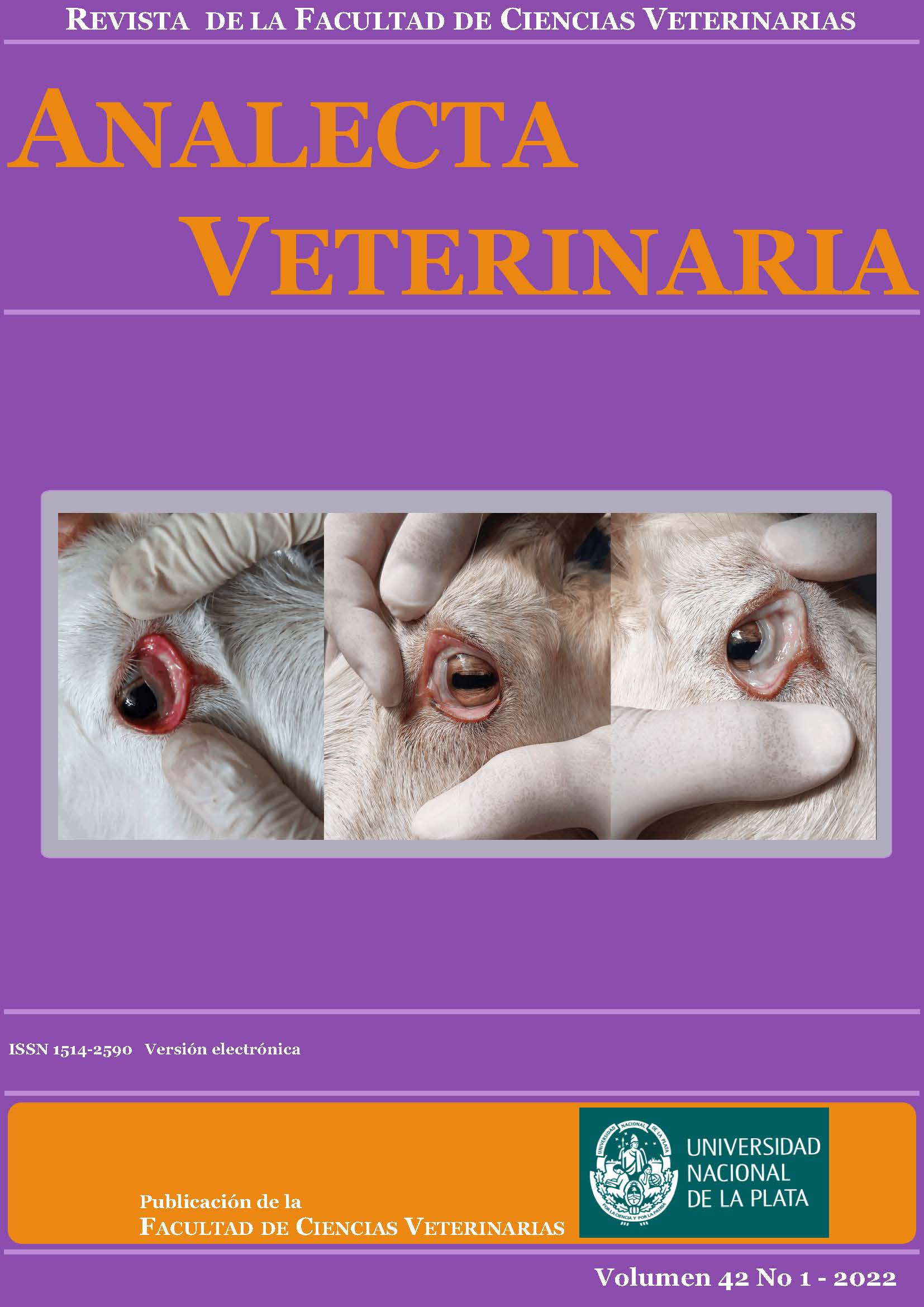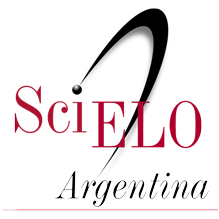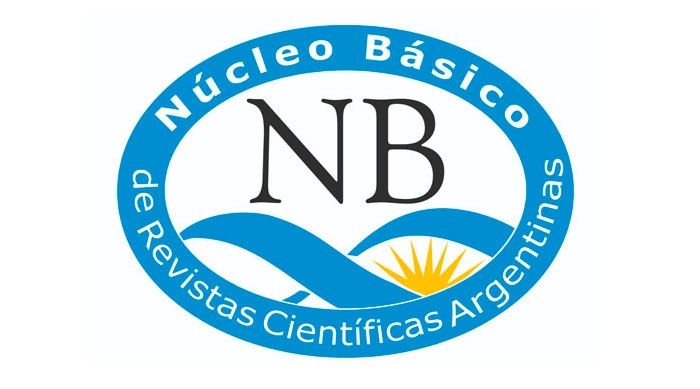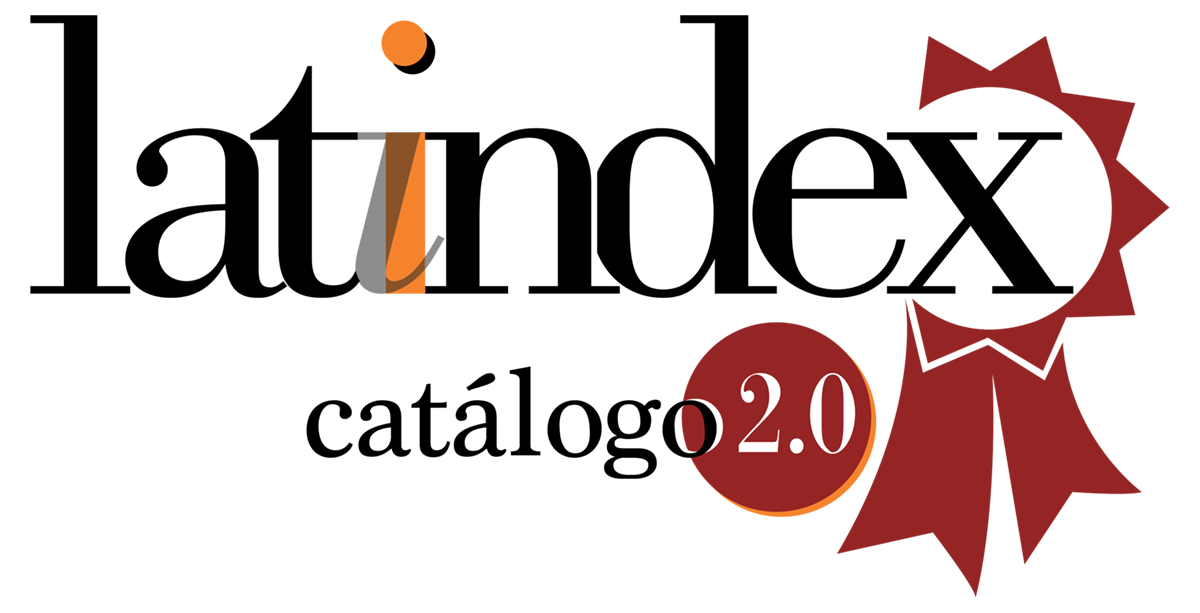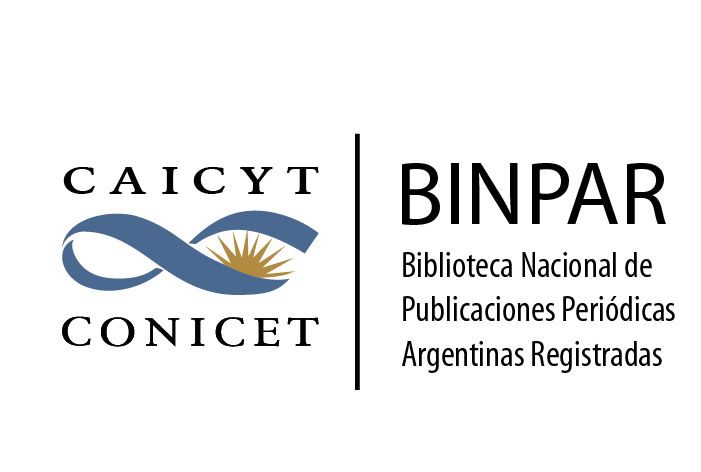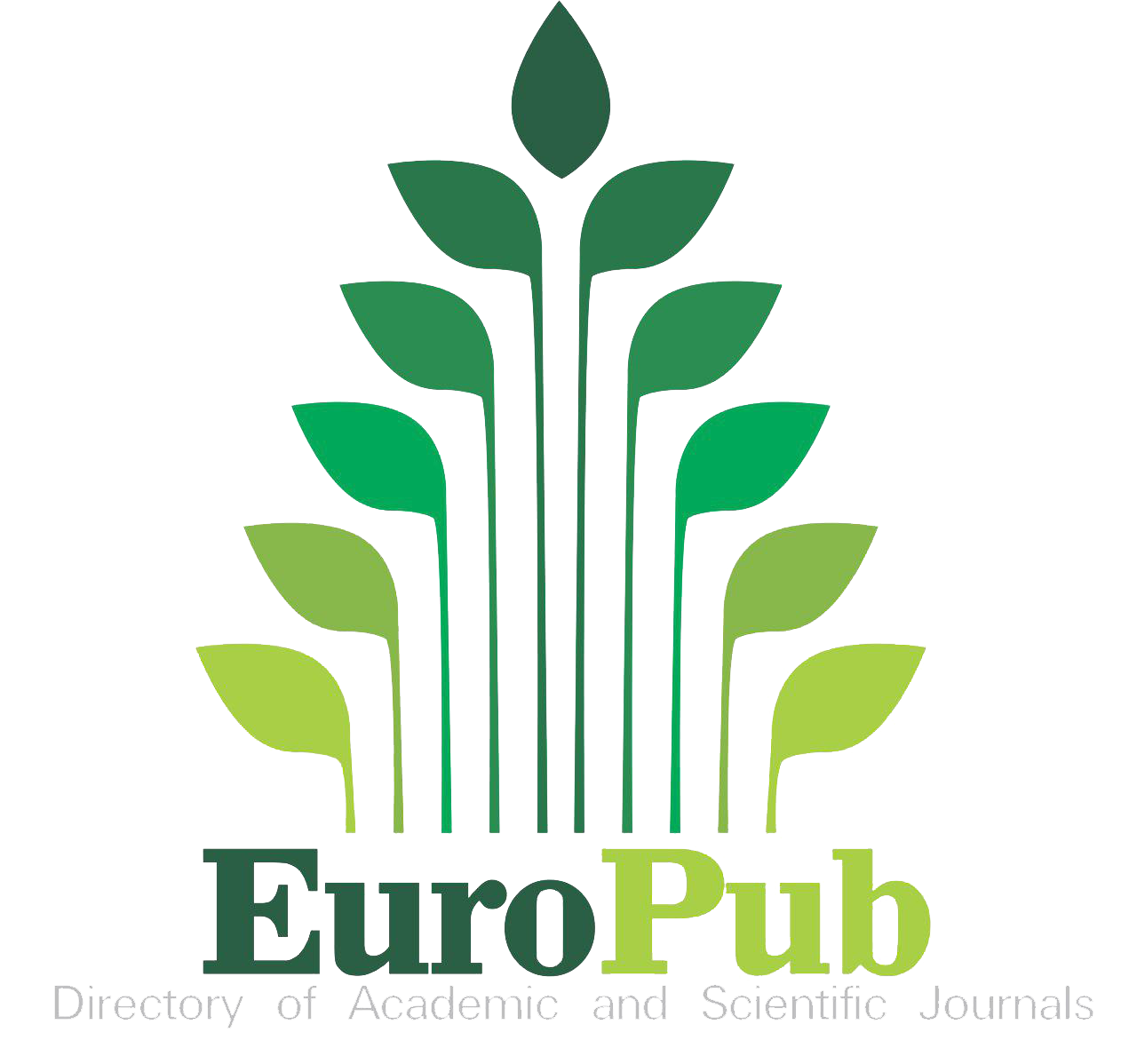Circulation of multiresistant methicillin resistant Staphylococcus aureus in pig farms from Argentina
DOI:
https://doi.org/10.24215/15142590e063Keywords:
Staphylococcus aureus, methicillin- resistance, MRSA, MDR, pigsAbstract
In the present work, the presence of methicillin-resistant Staphylococcus aureus (MRSA) was evaluated in the nasal cavity of pigs from intensive farms during 2019 and 2021, with the aim to report MRSA circulation of this relevant public health pathogen in Argentina. A total of 64 samples obtained from 5 farms in Buenos Aires, Santa Fe and San Luis provinces were studied. Nineteen (29.7%) MRSA were isolated, confirmed by the presence of the mecA gene; all isolates were multidrug resistant (3 or more families of antibiotics). All MRSA were susceptible to rifampin, nitrofurantoin, and linezolid and resistant to chloramphenicol, tetracycline, and ciprofloxacin. Resistance to erythromycin, to clindamycin and non-susceptibility to gentamicin was 68.4% (13/19), 78.9% (15/19), and 57,9% (11/19), respectively. Carrier animals were 27, 80, 120 and 154 days old, and MRSA was identified in all the sampled farms. The isolates from 2019 were characterized as clonal complex 1 (community MRSA), which is prevalent in the human population. These findings show the circulation of MRSA in pigs from intensive farms and highlight the need for surveillance in order to take appropriate measures to prevent its spread.
Downloads
Metrics
References
Alba P, Feltrin F, Cordaro G, Porrero MC, Kraushaar B, Argudín MA, Nykäsenoja S, Monaco M, Stegger M, Aarestrup FM, Butaye P, Alessia F., Battisti A. 2015. Livestock-associated methicillin resistant and methicillin susceptible Staphylococcus aureus sequence type (CC)1 in European farmed animals: high genetic relatedness of isolates from Italian cattle herds and humans. PLoS ONE 10(8):e0137143. https://doi.org/10.1371/journal.pone.0137143
Armand-Lefevre L, Ruimy R, Andremont A. 2005. Clonal comparison of Staphylococcus aureus isolates from healthy pig farmers, human controls, and pigs. Emerging Infectious Diseases 11(5):711-4. https://doi.org/10.3201/eid1105.040866
Abreu R, Rodríguez-Álvarez C, Lecuona M, Castro B, González JC, Aguirre-Jaime A, Arias Á. 2019. Increased antimicrobial resistance of MRSA strains isolated from pigs in Spain between 2009 and 2018. Veterinary Sciences. 6(2):38. https://doi.org/10.3390/vetsci6020038
Bonvegna M, Grego E, Sona B, Stella MC, Nebbia P, Mannelli A, Tomassone L. 2021. Occurrence of methicillin-resistant coagulase-negative Staphylococci (MRCoNS) and methicillin-resistant Staphylococcus aureus (MRSA) from pigs and farm environment in Northwestern Italy. Antibiotics. 10(6):676. https://doi.org/10.3390/antibiotics10060676
Crespo-Piazuelo D, Lawlor PG. 2021. Livestock-associated methicillin-resistant Staphylococcus aureus (LA-MRSA) prevalence in humans in close contact with animals and measures to reduce on-farm colonisation. Irish Veterinary Journal. 74:21. https://doi.org/10.1186/s13620-021-00200-7
Crombé F, Argudín MA, Vanderhaeghen W, Hermans K, Haesebrouck F, Butaye P. 2013. Transmission dynamics of methicillin-resistant Staphylococcus aureus in pigs. Frontiers in Microbiology. 4:57. https://doi.org/10.3389/fmicb.2013.00057
Clinical Laboratory Standards Institute (CLSI). 2020. VET01S ED5: Performance standards for antimicrobial disk and dilution susceptibility tests for bacteria isolated from animals, 5th edition. Clinical Laboratory Standards Institute, Wayne, PA.
Clinical Laboratory Standards Institute (CLSI). 2021. M-100 – 31 Ed.: Performance standards for antimicrobial disk susceptibility test: approved standard - 31st Edition. Clinical Laboratory Standards Institute, Wayne, PA.
DANMAP.2016. Use of antimicrobial agents and occurrence of antimicrobial resistance in bacteria from food animals, food and humans in Denmark. ISSN 1600-203 European Food Safety Authority. 2021. The European Union summary report on antimicrobial resistance in zoonotic and indicator bacteria from humans, animals and food in 2018/2019. EFSA Journal 19(4):6490. https://doi.org/10.2903/j.efsa.2021.6490
Giacoboni GI, Gagetti P, Pasterán F, Cappuccio J, Vigo GB, Perfumo CJ, Corso A. 2016. Staphylococcus resistentes a meticilina y multirresistentes en cerdos de cría intensiva: estudio longitudinal en un establecimiento de la provincia de Buenos Aires. XIV Congreso Argentino de Microbiología, Rosario, Santa Fe, p.304.
Jolley KA, Bray JE, Maiden MCJ. 2018. Open-access bacterial population genomics: BIGSdb software, the PubMLST.org website and their applications. Wellcome Open Research. 3:124. https://doi.org/10.12688/wellcomeopenres.14826.1
Organización Mundial de la Salud (OMS) 2017. La OMS publica la lista de las bacterias para las que se necesitan urgentemente nuevos antibióticos [En línea]. [Consultado 04/011/2021]. Disponible en: https://www.who.int/es/news/item/27-02-2017-who-publishes-list-of-bacteria-for-which-new-antibiotics-are-urgently-needed
Rossi G., Cerquetella M., Attili AR (2016) Aspectos anfixenósicos de la infección por Staphylococcus aureus en el hombre y los animales. En: Bagnoli F., Rappuoli R., Grandi G. (eds) Staphylococcus aureus. Temas Actuales en Microbiología e Inmunología, vol 409. pp 297-323 Springer Cham. [Consultado 04/11/2021]. https://doi.org/10.1007/82_2016_2
Servicio Antimicrobianos, INEI-ANLIS “Dr Carlos G. Malbrán”. Protocolo para detección del gen mecA por PCR. [En línea]. [Consultado 05/01/2022]. Disponible en: http://antimicrobianos.com.ar/ATB/wp-content/uploads/2021/01/Detecci%C3%B3n-mecA1.pdf
Voss A, Loeffen F, Bakker J, Klaassen C, Wulf M. 2005. Methicillin-resistant Staphylococcus aureus in pig farming. Emerging Infectious Diseases. 11(12):1965-6. https://doi.org/10.3201/eid1112.050428
Wettstein Rosenkranz K, Rothenanger E, Brodard I, Collaud A, Overesch G, Bigler B, Marschall J, Perreten V. 2014. Nasal carriage of methicillin-resistant Staphylococcus aureus (MRSA) among Swiss veterinary health care providers: detection of livestock- and healthcare-associated clones. Schweizer Archiv Tierheilkunde.156(7):317-25. https://doi.org/10.1024/0036-7281/a000601
Published
How to Cite
Issue
Section
License
Copyright (c) 2022 Gabriela Isabel Giacoboni, Hernán Darío Nievas, Victorio Fabio Nievas, Estefanía Marisol Pérez, Alberto Domingo Armocida, Fabiana Alicia Moredo, Paula Gagetti

This work is licensed under a Creative Commons Attribution-NonCommercial-NoDerivatives 4.0 International License.
Authors retain the copyright and assign to the journal the right of the first publication, with the with the terms of the Creative Commons attribution license. This type of license allows other people to download the work and share it, as long as credit is granted for the authorship, but does not allow them to be changed in any way or used them commercially.

Analecta Veterinaria by School of Veterinary Sciences, National University of La Plata is distributed under a Creative Commons Attribution-NonCommercial-NoDeriv 4.0 International License.

